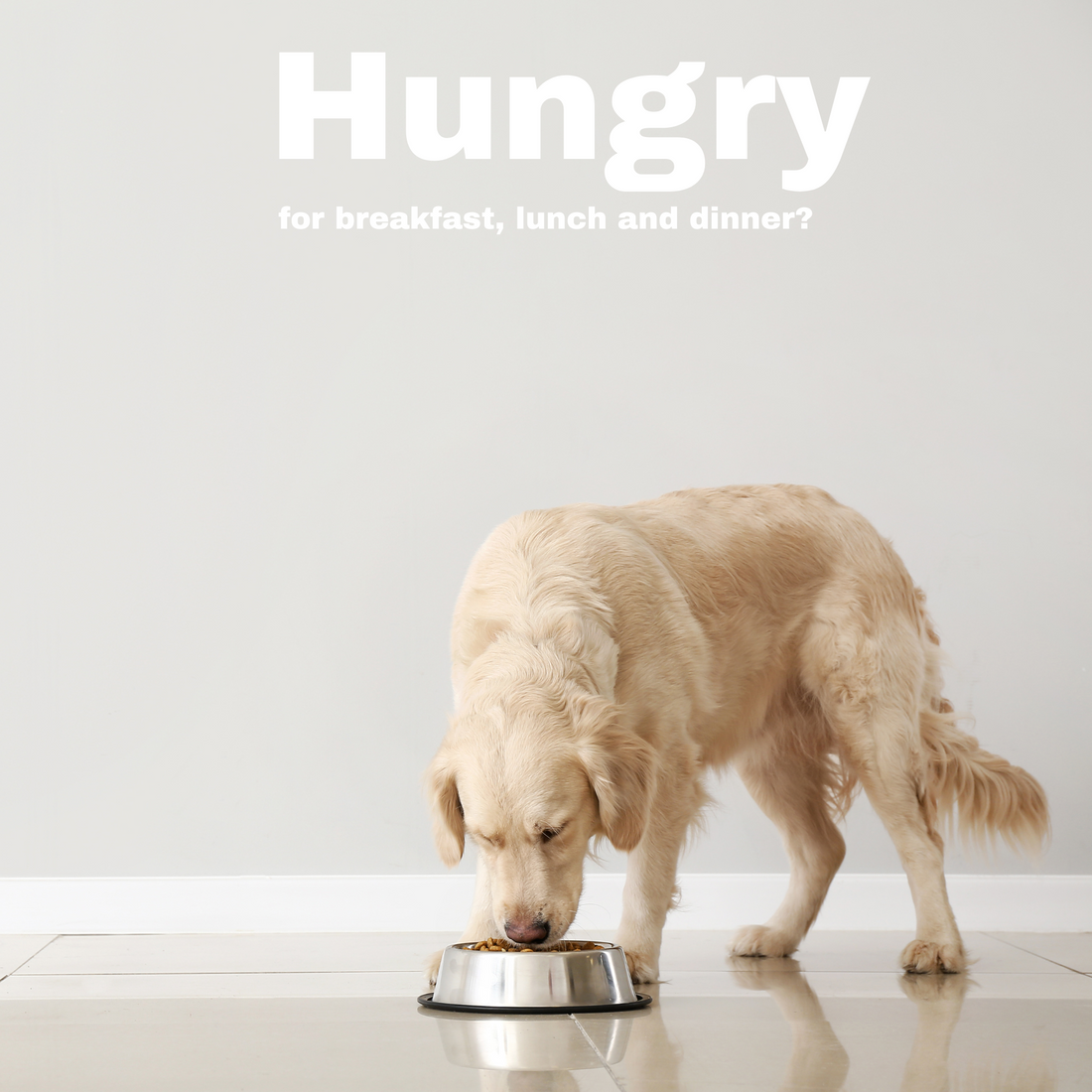
Breakfast is the most important meal of the day
Share
Breakfast, Lunch or Dinner?
Human beings eat 3 meals a day (okay, maybe more… if chips and cheese count as a meal) and some of us still go to bed with cravings (a nice scoop of fruit gelato, anyone?). There is heaps of information about human nutrition on the internet such as what you should eat, how much you should eat, and when you should eat it, but what about your other family members, your furbabys?
On our nutrition page, we talk about a weight to food ratio. For example, if your pup weighs 30kg, they should have 600g across two meals a day. An ordinary domestic cat weighing 4kg needs 100 grams. This, of course, is just a general guide, it ultimately depends on how active your pet is and what their needs are. You should consult with your vet before increasing or decreasing their food intake, but even if our food guide has been helpful for you, you may have further questions.
So you know that it is best to feed your pet two times a day based on their weight. The question is: when should you feed your pet?
Like we said, humans eat breakfast, lunch and dinner, but our furry friends don’t eat at every meal. Our suggestion is this: split their meals between breakfast and dinner, and supplement with a lunch snack if they’re hungry.

Feeding your dog in the morning also helps to maintain stable blood sugar levels to prevent lethargy, irritability and mood swings.This means breakfast keeps them happy and regulated.
Another benefit of breakfast is improved digestion. When your pet eats first in the morning, there’s enough time between their next meal to kick digestion into gear. This reduces the risk of upset stomachs, bloating, and digestive issues. It's a natural way to ensure that your dog's digestive system operates smoothly and efficiently.
One of the most important parts of breakfast for everyone is routine. Dogs thrive on routine and consistency. Establishing a regular feeding schedule with breakfast in the morning helps your dog understand what to expect. This can be particularly helpful with introducing and maintaining training.
And Dinner?
Eating at dinner time also allows them to maintain a routine, keep their weight healthy and allow them to go to bed at night without worrying about a grumbly tummy. Feeding your pet dinner about three hours before bedtime gives everyone time to use the bathroom and settle in before bedtime.
Lunch?
If you’re worried about lunch, don’t worry! There’s plenty of things you can do to supplement lunch. You can provide long-term enrichment such as a bone or dried meat sticks so they can eat when they’re hungry. During the warmer months, you can make a slow release snack by freezing some goodies and putting it in their food bowl before you leave for the day. You can freeze bone broth, or water with berries in it, or pureed vegetables. As it defrosts, your pet can snack, satisfying a hungry tummy and boosting hydration as well.
In the end, whatever feeding schedule works for you and your furry friend is the best one. The key is to consider your pet's unique needs, activity level, and consult with your vet for guidance on their food intake. What's most important is ensuring they're happy, healthy, and well-fed — because a well-fed pet is a happy pet, and a happy pet makes a happy home.
